Shotgun Shooting
Maintaining your gundog's training
If you neglect your gundog’s training during the summer, the consequences will become noticeable and problems can quickly build up. But don’t worry, with a few targeted exercises, you can bring your dog back into top shape before the hunting season begins.
“The thing to remember is that your overall aim has to be to enter the shooting season with a well-schooled gundog.”
There is no doubt that by the time the end of the shooting season arrives we have a very different gundog to the one we started with way back in September. In fact, many dogs suffer from phenomenon known as ‘January Dog Syndrome’ – JDS for short.
This last season me and my cocker spaniel ‘Ted’ did over sixty-seven days in the shooting field. Not only did I enjoy many days shooting over the dog, but we also worked in the beating line on a number of driven game shoots and also spent countless hours picking up.
On average I covered over 16 kilometres per day over varied terrain, and I am fairly sure the little dog would have covered at least five times more and at times through thick bramble and heavy bracken. After five months of hard physical work the first thing I do is to give the dogs a well-earned rest of around a month or so. They need time to recuperate both mentally and physically.

Feed for function
During the winter months when the dogs are working hard, I make sure that I feed them a good well-balanced food and plenty of it. On a cold wet day, you can sometimes literally see the weight drop off the dogs, especially if they are one of the breeds like a cocker spaniel or one of the many dogs that doesn’t have a particularly thick coat.
Over the summer months I put the dogs on a lower protein food, and this just takes the edge off their energy and by virtue of the fact they are doing less exercise they do put on a bit of weight. I feel that a hard-working gundog needs to be able to pull on its body reserves during a shoot day, especially if it is working in the beating line where it will be expected to keep going for anything up to 5 hours.
If you run your dogs too ‘light’ they will soon have nothing in reserve, and I have seen more than one gundog collapse because they have literally run themselves dry of their energy reserves. That said, a fat dog is no good to anyone so around the end of July or beginning of August I start to change the dog’s food to a higher protein level and increase their exercise regime.

Getting match fit
If you have access to a clean lake, stream, or pond then these can obviously be utilised but make sure they are clear of any blue green algae or indeed any underwater obstructions. Some gundogs love to enter the water in spectacular fashion and although this looks extremely exciting it can be disastrous if there were to be a fallen tree or some other obstacle laying just underneath the water line.
A really good lesson I learnt from a trainer some years ago is that when you are giving your dog water retrieves, do not always throw the dummies mid-water. Throw a couple on the other bank. Most pricked waterfowl will try and make for the cover alongside the water edge and if your dog has only ever been trained by having retrieves in the middle of the water, they will quite often just swim around and around looking for the dummy and not hunting the far bank.
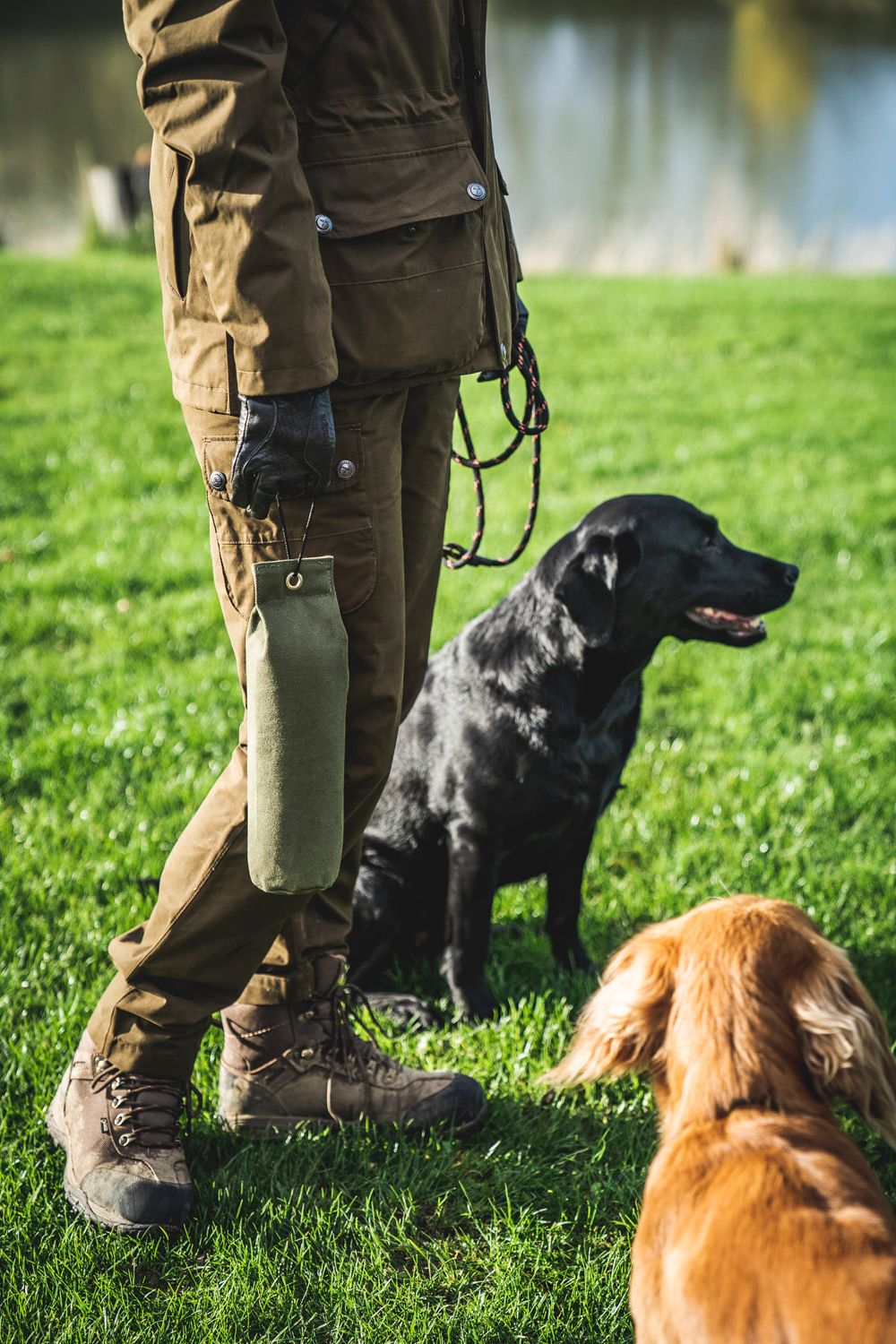
Get your gundog in good shape
As the shooting season draws ever closer, one thing that you should obviously do is to increase the length of your daily walks. This not only helps to increase your dog’s fitness, it will also help to get you back in shape.
Road walking is not only an excellent way of building up muscle and toughing up feet and pads, it is also a good time to tidy up the dog’s heel work. This is probably one aspect of the dogs training that will suffer during the shooting season. I like to spend some ‘dedicated’ time working on my heel work during a walk. I will do a lot of tight circles and figures of eight. This helps to make sure that the dog is having to concentrate on what is going on.
While you are at it, get ‘off roading’ with your dog. If you spend most of your time walking on flat fairly smooth terrain of fields and parks, it’s time to get walking over not so smooth areas where there is longer grass, tufts, divots and furrows. Not only will it get you and dog fit but it means you can teach your dog to walk reasonably close to you over rough ground.
Training Mind and Body: How to keep your gundog fit and focused
Controlling hunting patterns: How to keep your gundog within range
If you have one of the hunting breeds there is no doubt that one problem that will have manifested itself during the shooting season: The dog is pulling on or hunting too far from you. This causes two issues. The first is that if you are shooting over the dog it may well be flushing game out of shot range. Secondly, if they do get away from you and find game, they are more likely to give chase and that really isn’t a desirable trait in a gundog.
It is very difficult to recreate the true atmosphere of a shoot day and working on a gundog’s hunting skills during the warmer months can be counterproductive as quite often there is nothing for them to find and they soon dry up and stop hunting. However, there are a few exercises you can do to sharpen up their skills.
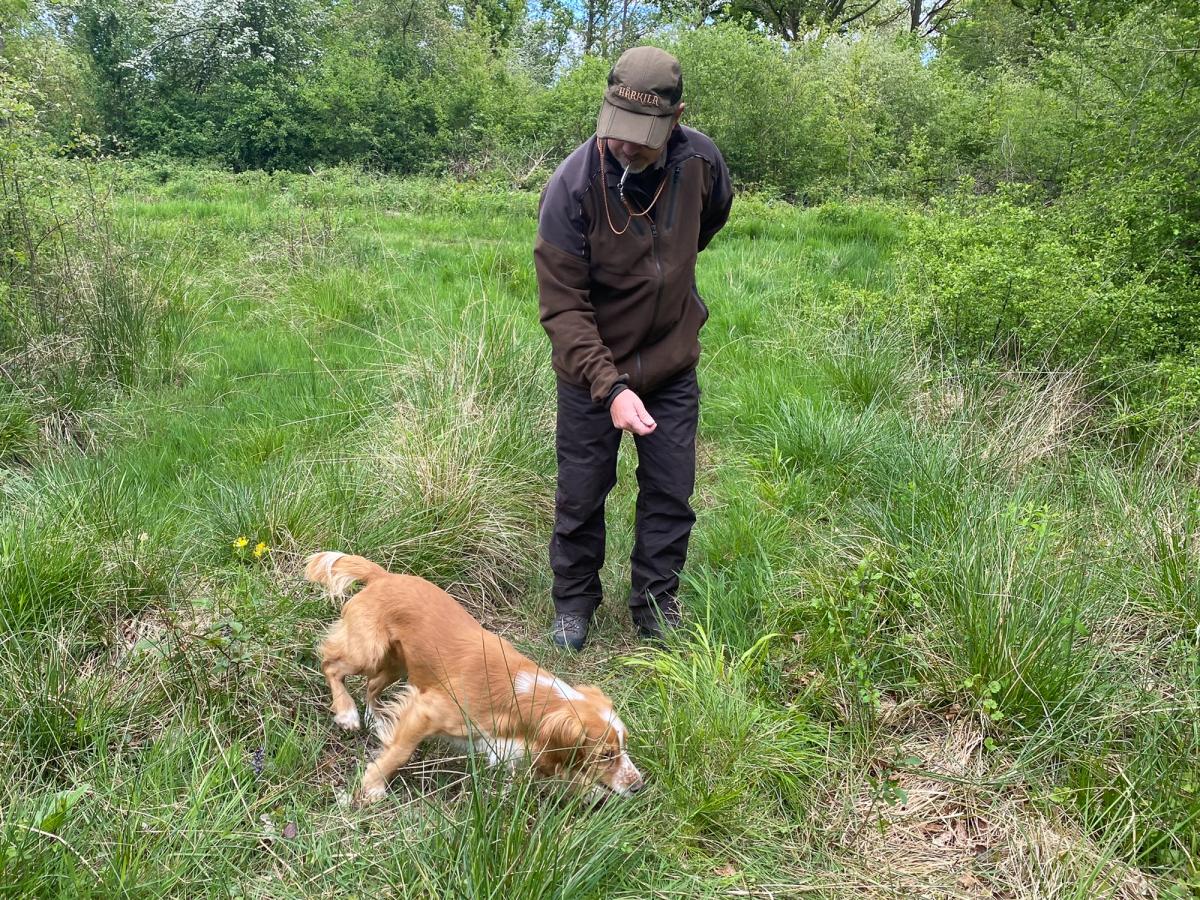
Training your gundog to stay close and focused
The overall key to any technique you decide to use is that the dog always finds or gets its reward close to you, the handler. We want to develop in the dog the total belief that he thinks that you are the provider of good things. The theory behind this is that we reduce the desire in the dog to disappear over the horizon to self-hunt and even worse get a flush and a chase and therefore self-reward.
If your dog is steady, sit it up next to you or if needs be keep it on a lead. Throw out a fur dummy or tennis ball a short way in front of the dog and walk it way so it loses the mark. Turn the dog round and set it off hunting for the dummy. I click my fingers as a ‘hunt command’ but you could use a verbal command as well. Just be consistent with whatever you use. Slowly walk the dog towards the area encouraging the dog to work the area the rough grass will have hidden the ball and therefore the dog will have to get its nose down and work to find it.
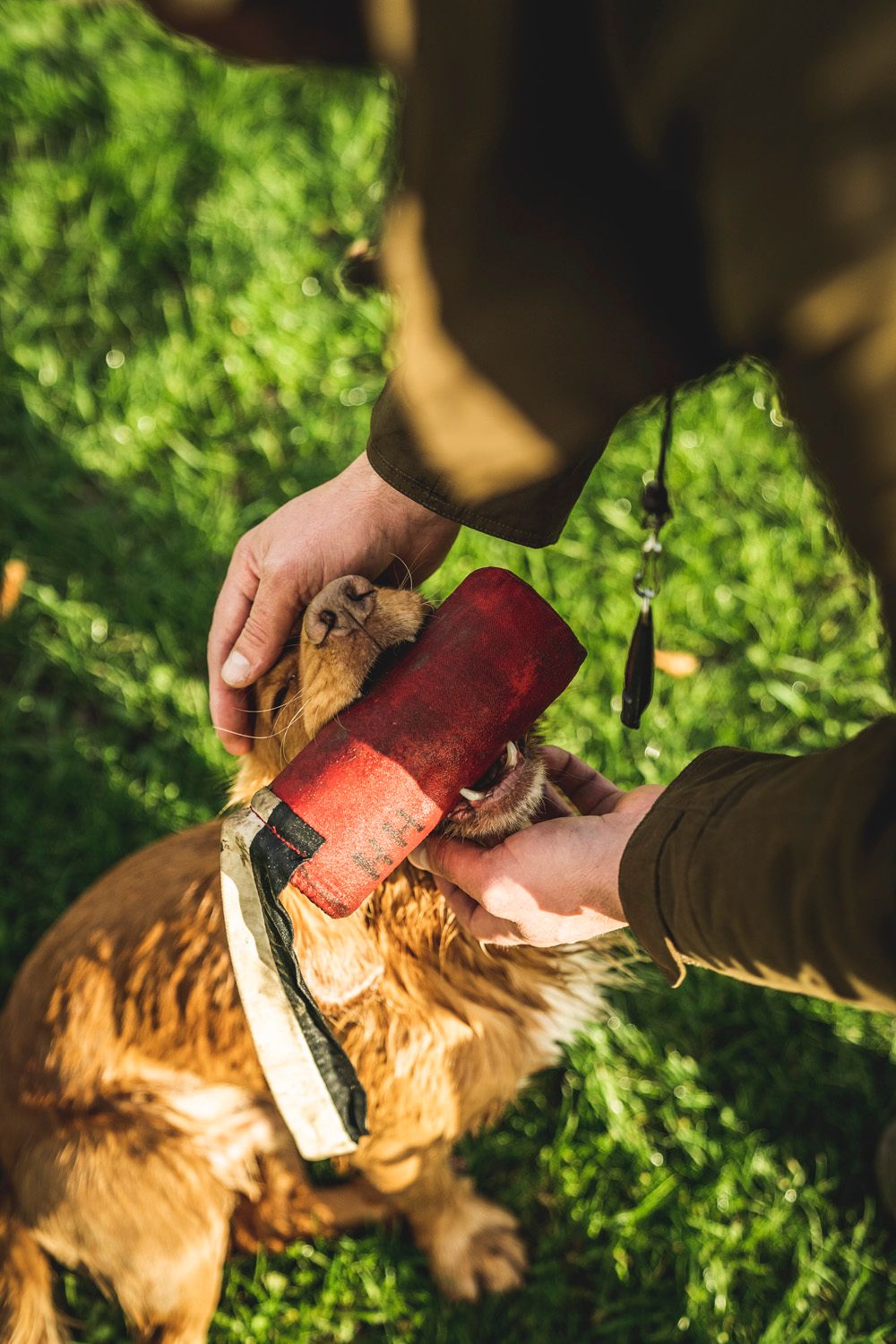
No scent? Not a problem
Some dogs are reluctant to hunt ground that has no scent to get them fired up and not everyone has access to scenty ground. So, the following exercise can help overcome this problem. Sit the dog next to you and put your hand over the dog’s eyes. Rub the fur dummy in the grass immediately in front of you. This will lay some scent and the dog will also hear the noise.
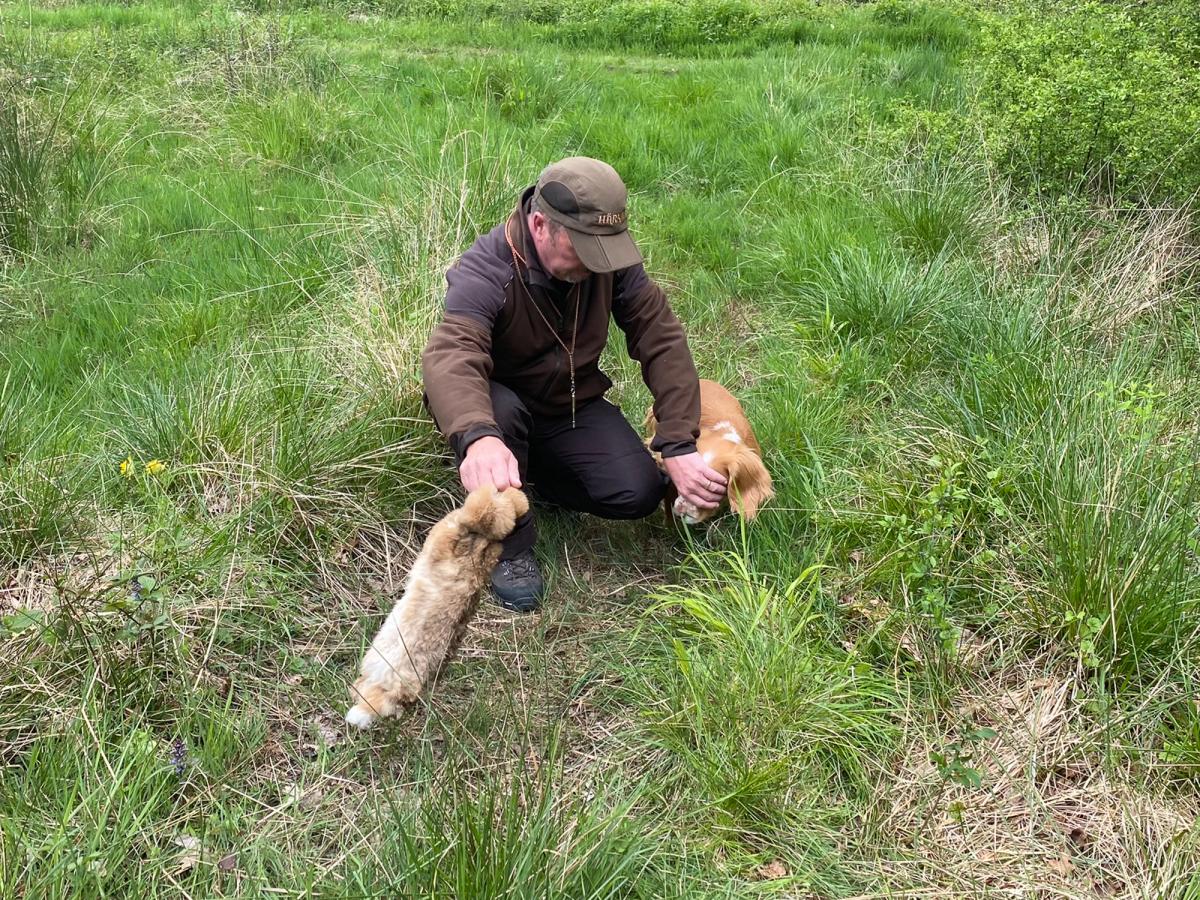
The important bit to this exercise is that you do not put the ball down. Instead, keep hold of it and hide it in a pocket or keep hold of it so the dog can’t see it. Click your dog off and start it hunting. The dog will believe that the ball is hidden somewhere in the grass (due to the scent and sound) and will work that area around your feet in an effort to find it.
You will need good timing for the next part of the exercise. When the dog has its nose down and is not looking at you, drop the ball by your feet and call the dog back into the area. In the early stages drop the ball relatively quickly. As the dog progresses you can leave it hunting for longer periods. If all goes to plan, he will find the ball right next to you and thereby re-enforcing the dog’s belief that if he stays near the owner, he will get his reward.
At this stage we are artificially creating a good close hunting habit. As the dog gets on scent, he will naturally start to open up but as we have conditioned him to stay close, he will still be well within an acceptable distance.
The thing to remember is that your overall aim has to be to enter the shooting season with a well-schooled gundog. Be in no doubt that as your dog re-gains his working fitness and grows in confidence, failings in your summer training will start to show through and things can quickly spiral out of control.
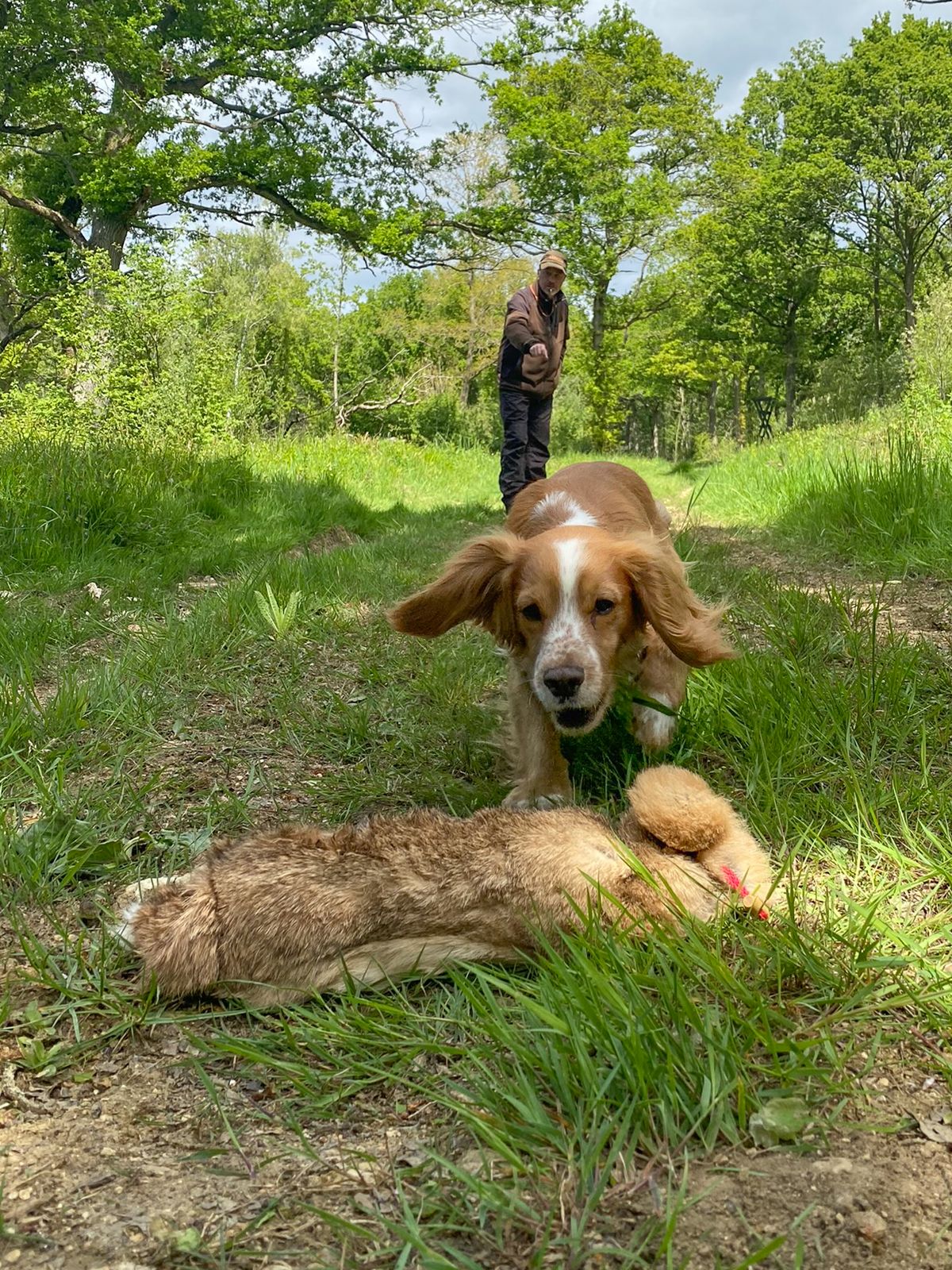
Written in corporation with Nick Ridley, who is a steady contributor to a handful of British hunting magazines. He is one of Great Britain’s leading gundog photographers and an experienced gundog trainer.